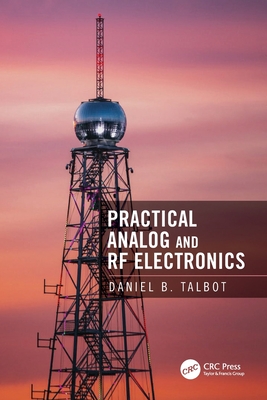The book offers practical solutions to analog and RF problems, helping the reader to achieve high performance circuit and system design. This is a book about real-world techniques in designing analog circuits: amplifiers, filters, injection-locked oscillators, phase-locked loops, etc.
This is a book about real-world design techniques for analog circuits: amplifiers, filters, injection-locked oscillators, phase-locked loops, transimpedance amplifiers, group delay correction circuits, notch filters, and spectrum regrowth in digital radio frequency (RF) transmitters, etc.
The book offers practical solutions to analog and RF problems, helping the reader to achieve high-performance circuit and system design. A variety of issues are covered, such as:
- How to flatten group delay of filters
- How to use reciprocity to advantage
- How to neutralize a parasitic capacitance
- How to deepen a notch by adding only two components to the network
- How to demodulate a signal using the secant waveform and its benefit
- How to flatten the frequency response of a diode detector
- When to use a transimpedance amplifier and how to maximize its performance
- How to recover non-return-to-zero (NRZ) data when alternating current (AC) coupling is required
- Why phase noise corrupts adjacent communication channels
- Simple method to prevent false locking in phase-locked loops
- How to improve the bandwidth of amplification by using current conveyors
- A very simple impedance matching technique requiring only one reactive component
- How to use optimization
- Quadrature distortion and cross-rail interference
This book is meant to be a handbook (or a supplemental textbook) for students and practitioners in the design of analog and RF circuitry with primary emphasis on practical albeit sometimes unorthodox circuit realizations. Equations and behavioral simulations result in an abundance of illustrations, following a "words and pictures" easy-to-understand approach. Teachers will find the book an important supplement to a standard analog and RF course, or it may stand alone as a textbook. Working engineers may find it useful as a handbook by bookmarking some of the step-by-step procedures, e.g., the section on simplified impedance matching or group delay flattening.
Get Practical Analog and RF Electronics by at the best price and quality guranteed only at Werezi Africa largest book ecommerce store. The book was published by Taylor & Francis Ltd and it has pages. Enjoy Shopping Best Offers & Deals on books Online from Werezi - Receive at your doorstep - Fast Delivery - Secure mode of Payment
 Jacket, Women
Jacket, Women
 Woolend Jacket
Woolend Jacket
 Western denim
Western denim
 Mini Dresss
Mini Dresss
 Jacket, Women
Jacket, Women
 Woolend Jacket
Woolend Jacket
 Western denim
Western denim
 Mini Dresss
Mini Dresss
 Jacket, Women
Jacket, Women
 Woolend Jacket
Woolend Jacket
 Western denim
Western denim
 Mini Dresss
Mini Dresss
 Jacket, Women
Jacket, Women
 Woolend Jacket
Woolend Jacket
 Western denim
Western denim
 Mini Dresss
Mini Dresss
 Jacket, Women
Jacket, Women
 Woolend Jacket
Woolend Jacket
 Western denim
Western denim
 Mini Dresss
Mini Dresss






























































